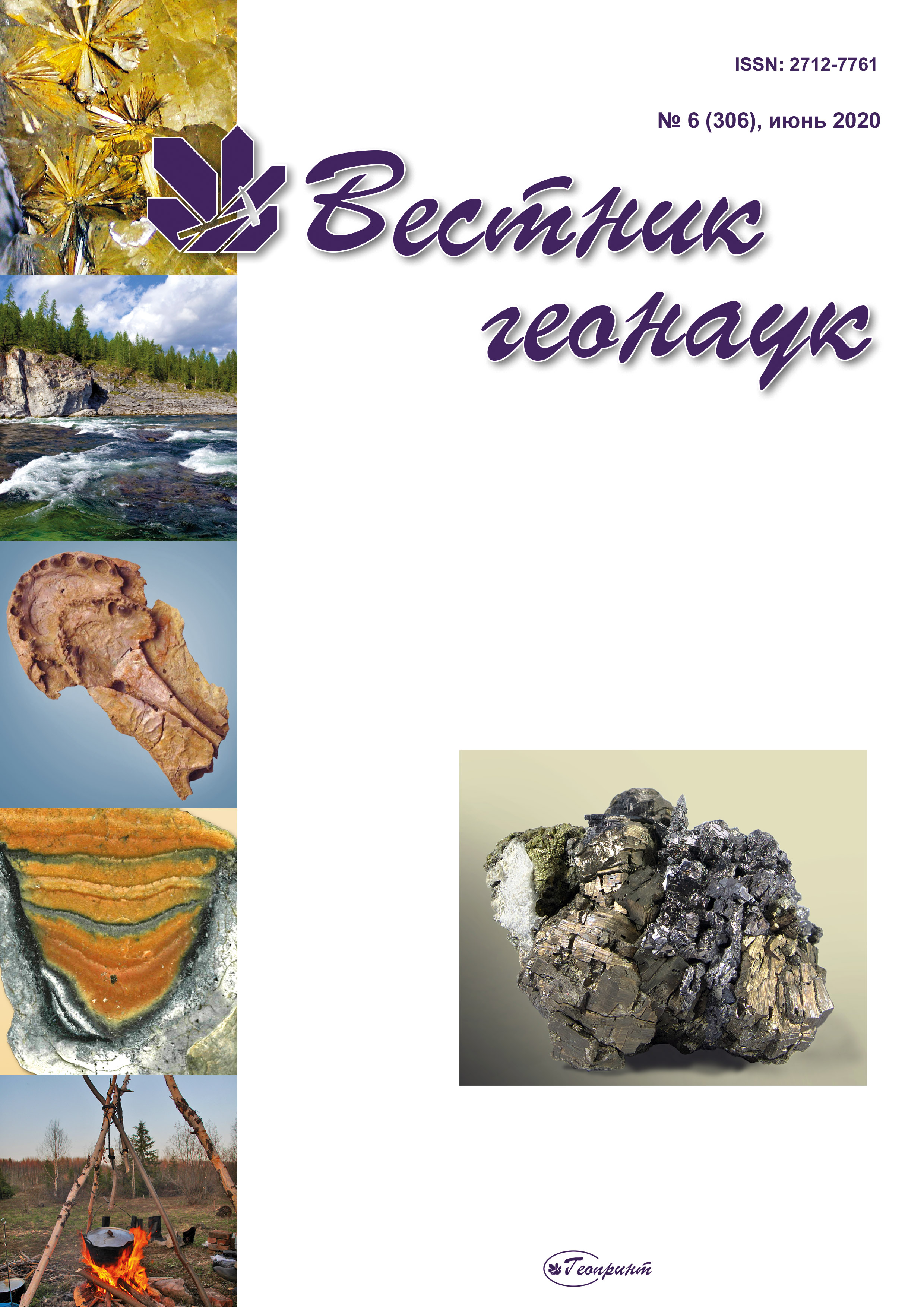|
Title page
|
1
|
|
Content
|
2
|
| |
|
|
Scientific articles
|
Earthquake on March 8, 2020 within the Kotlas graben (Central Russian aulacogen)
N. N. Noskova
DOI: 10.19110/geov.2020.6.1
The results of the instrumental processing of the seismic event on March 8, 2020 in the Lensky district of the Arkhangelsk region, near the border with the Komi Republic, in the middle reaches of the Vychegda river are presented. Particular attention is paid to determining the nature of the seismic event. It is classified by us as a «tectonic earthquake» and has the following parameters: 62.578N, 49.122E, t0 = 23:29:39.4 (UTC), h = 30 km, Kp = 8.9, ML = 2.8, Ms = 2.0, еrror ellipse: AzMajor = 40°, Rminor = 6.0 km, Rmajor = 17.8 km. There are no macroseismic earthquake data since the epicentral region is located within the Yarensky State Biological Reserve and is poorly populated. In tectonic terms, the March 8 earthquake refers to the Kotlas graben, which stands out as an independent structure and is the northeastern end of the Central Russian aulacogen, marking the collision suture zone between Fennoscandia and Volga-Sarmatia. The occurrence of seismic events within Riphean aulacogens confirms that they are seismic generating structures.
Keywords: earthquake, epicenter, Russian plate, Central Russian aulacogen, Kotlas graben.
 Download full text Download full text
|
3—9
|
Distribution of large diamonds in rsa placers
O. N. Malykh
DOI: 10.19110/geov.2020.6.2
The data from the English-language scientific literature on the distribution of large diamonds in the placers of RSA are summarized. The regularity in their distribution is determined. This property is applied in forecasting the sources that formed the Lichtenburg alluvial diamond field. The features of the transfer of large diamonds in the Middle and the Lower Orange river are determined.
Keywords: diamonds, placers, kimberlite pipes
 Download full text Download full text
|
10—14
|
|
Mineralogical evidence of the inevitable losses of tin during ore processing at the Pravourmiysky deposit (Khabarovsk Region)
T. A. Chikisheva, S. A. Prokopyev, E. S. Prokopyev
DOI: 10.19110/geov.2020.6.3
The article presents the results of a comprehensive mineralogical study of the ores of the Pravourmiysky deposit using optical microscopy and X-ray analysis, scanning electron microscopy. Mineralogical studies have identified and explained the causes of possible losses of tin with enrichment tails. Тhe data obtained were used in the development of the ore beneficiation scheme and were included in the technological regulations for the designing of the beneficiation plant.
Keywords: multicomponent tin ores, mineralogical and technological assessment of ores, difficult ores.
 Download full text Download full text
|
15—19
|
Heavy metals in samples of snow and ground water in the neighborhood of the Severodvinsk industrial area
E. N. Zykova, E. U. Yakovlev, S. B. Zykov, A. A. Ocheretenko, P. I. Lapikov
|
20—26
|
Is there amber in the Middle Urals?
О. V. Martirosyan
DOI: 10.19110/geov.2020.6.5
The article analyses evidences dating back to the 17th — early 20th centuries, which confirm the presence of fossil resins in the Urals. It is shown that previously all of them were mistakenly called «amber». The most complete data on the composition of fossil resins and their physical and chemical properties are given for the Kolchedan occurrence and the Aleksandrovsky Log and Novy Log sites. Samples of the «Kolchedan amber» are krantzit, and the fossil resins from the Alexander Log and Novy Log sites are shraufite. For the remaining selected occurrences, data are not available, which complicates the assignment of resins to certain species. A thorough analysis of the prospects for the tar content of the selected locations is necessary, both on the basis of extensive field search and revision work, as well as a detailed study of the composition, properties and characteristics of the chemical structure of the found fossil resin.
Keywords: amber, krantzit, shraufitе, fossil resins, Middle Urals.
 Download full text Download full text
|
27—30 |
| |
|
|
Chronicle, events, facts
|
| |
|
|
Morphological diversity of ore mineral aggregates from cavities of Dalnegorsk deposits in the museum of the Far East Geological Institute
V. A. Solyanik
 Download text Download text
|
31—35 |
The Acting Head of the Komi Republic visited the Institute of Geology
E. Antropova
 Download text Download text |
35—36 |













